We may earn money or products from the companies mentioned in this post.
Introduction: Joshua Tree Hikes
This post takes a look at the best Joshua Tree hikes and the area around the park. Nestled in California’s enchanting landscape, Twentynine Palms, CA and Joshua Tree National Park offer a refuge for both hikers and nature lovers.
Why do so many hikers feel like the park and area around the park are a hiking paradise? One reason is the amazing natural beauty you see along the Joshua Tree hiking trails. Also, the city of Twentynine Palms has a captivating history in addition to other appealing attractions.
For more information about the best Joshua Tree hikes, see the AllTrails app. The free app has helpful information. The premium app has lots of useful hiking information including offline maps.
Also, consider an America The Beautiful Pass. The pass includes entry to all U.S. parks, monuments, forests, and more.
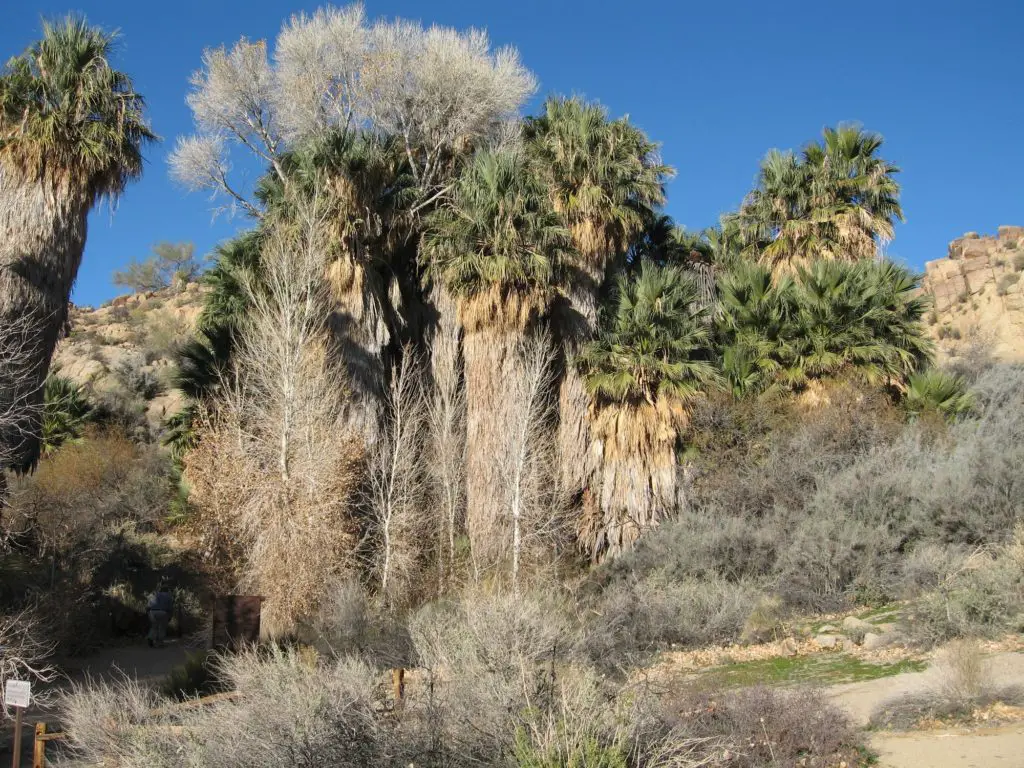
Twentynine Palms, CA
Twentynine Palms is a city located in southern California near the Arizona border. The city has a rich history that dates back to the early Native American tribes who lived in the area. Today, Twentynine Palms is a thriving community located in a unique desert landscape that attracts visitors from around the world.
Twentynine Palms rich history leaves you with a sense of wonder. The city’s roots go back to the early 1900s.
At that time, the city served as a stopping point for travelers on the way to the nearby gold mines. Today, it stands as a vibrant city that blends historic charm with modern comforts.
Early Twentynine Palms: Joshua Tree Hikes
Twentynine Palms history dates back to the early Native American tribes who lived in the region. The first people there were the Chemehuevi, Cahuillas, and Serrano tribes.
To live, these tribes relied on the desert’s natural resources that allowed them to hunt, gather, and farm. They lived in harmony with the land and developed complex water, conservation, and agriculture systems.
In the 19th century, settlers arrived to the area. They were drawn by the chance to become rich in the gold mines and the bright future promised by cattle ranching. The desert provided more than enough grazing land for cattle and other livestock.
Settlers especially wanted the area’s minerals. The area was rich in minerals, including gold and silver. Minerals attracted miners from all over the country.
Modern Twentynine Palms
In modern times, Twentynine Palms has new industries. While mining and ranching are still present, the city now has tourism as a major source of income. Also, the city has many hotels, restaurants, and shops for visitor’s needs.
The city of Twentynine Palms name comes from twenty nine palm trees that were found in the area when the first settlers came. The palm trees became a symbol of the city and are often featured in the city’s logos and signs.
For tourist’s, Twentynine Palms offers a unique experience. The city has a diverse local food scene that reflects the city’s multicultural nature. Visitors can enjoy a variety of food that ranges from:
- Mexican
- Asian
- American
- European
The city’s entertainment options include:
- Art galleries
- Live music venues
- Theaters
The city has a thriving arts scene. Many artists and performers call Twentynine Palms home. The local theaters offer a range of performances that include:
- Plays
- Concerts
- Film screenings
Also, the area’s closeness to major cities like Los Angeles and San Diego makes it easy for visitors to reach.
Joshua Tree National Park: Joshua Tree Hikes
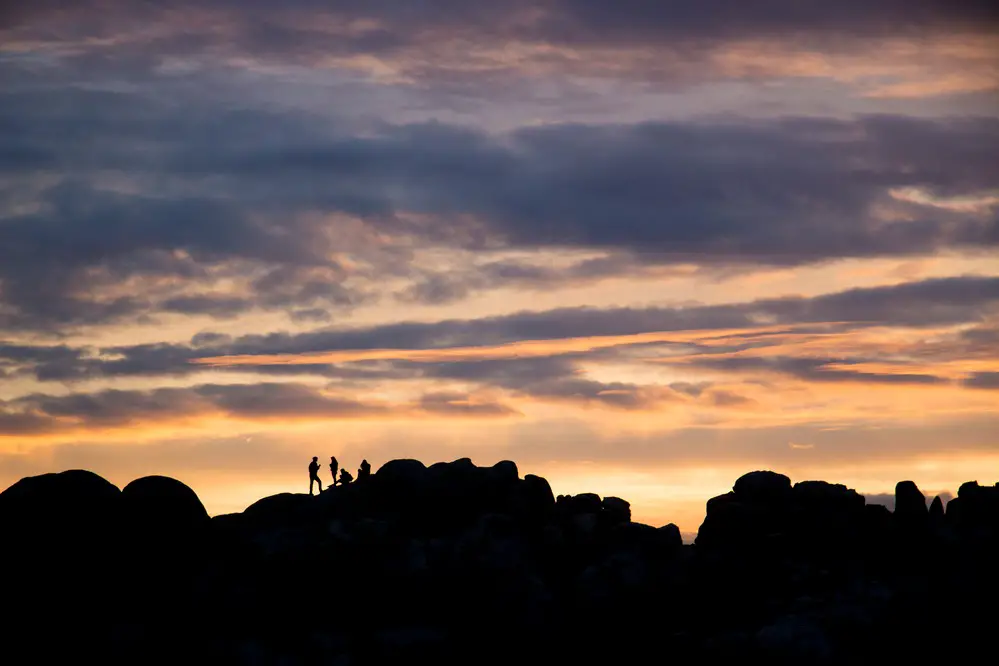
One of the most important events in Twentynine Palms’ history was when Joshua Tree was established. The park was formed in 1936 and covers a large area of desert landscape.
The landscape includes the famous Joshua Trees. The park’s geograpy also has unique rock formations, diverse plant life, and many different kinds of animals that thrive in the desert.
The Joshua Tree’s name comes from early Mormon settlers. They were reminded of a story in the Bible where Joshua reaches his hands up in prayer.
The tree limbs reminded them of praying hands. They also thought the trees helped guide them on their journey west.
The park was formed by environmentalists and conservationists who worked together. Both groups saw the region’s unique natural value. The park’s geographic history shows you how the area changed from a seabed millions of years ago to its current desert landscape.
Joshua Tree’s creation was an effort involving different individuals and groups. One of the key figures who helped create the park was Minerva Hamilton Hoyt.
Hoyt was an activist and conservationist who saw the area’s natural importance. Hoyt worked tirelessly to raise awareness for a park and gather support for the park. Other people and groups, like the National Park Service and local communities also had a large role in creating the park.
Covering vast acres of rugged land, Joshua Tree is well known for its unique desert ecology and famous Joshua trees. Its diverse range of plant and animal life includes:
- Cacti
- Yuccas
- Wildflowers
- Desert wildlife
- Unique rock structures
Together, this creates an awe inspiring background for the best hikes in Joshua Tree National Park.
What Makes Joshua Tree Hikes So Great?
Joshua Tree Park offers a wide range of things to do. Park activities that attract outdoor lovers from around the world include:
- Hiking
- Photography: The unique desert landscape offers breathtaking views.
- Rock climbing
- Camping
The area surrounding the park is a hiker’s dream due to its remarkable features and amazing natural sights. Some of the best Joshua Tree hikes include these trails:
- Arch Rock Trail
- Barker Dam Trail
- Fortynine Palms Oasis Trail
- Hidden Valley Trail
- Lost Palms Oasis Trail
- Panorama Loop Trail
- Ryan Mountain Trail
- Skull Rock Trail
- Split Rock Loop Trail
Arch Rock Trail: Description
Go on a journey through time as you hike the Arch Rock Trail. The trail takes you to a natural stone arch.
The arch provides a picture like setting for both hikers and photographers. As you wander along the enchanted trail, you will love the towering rock formations and sweeping views.
Short and hot, it’s still a nice trail to see Joshua Trees.
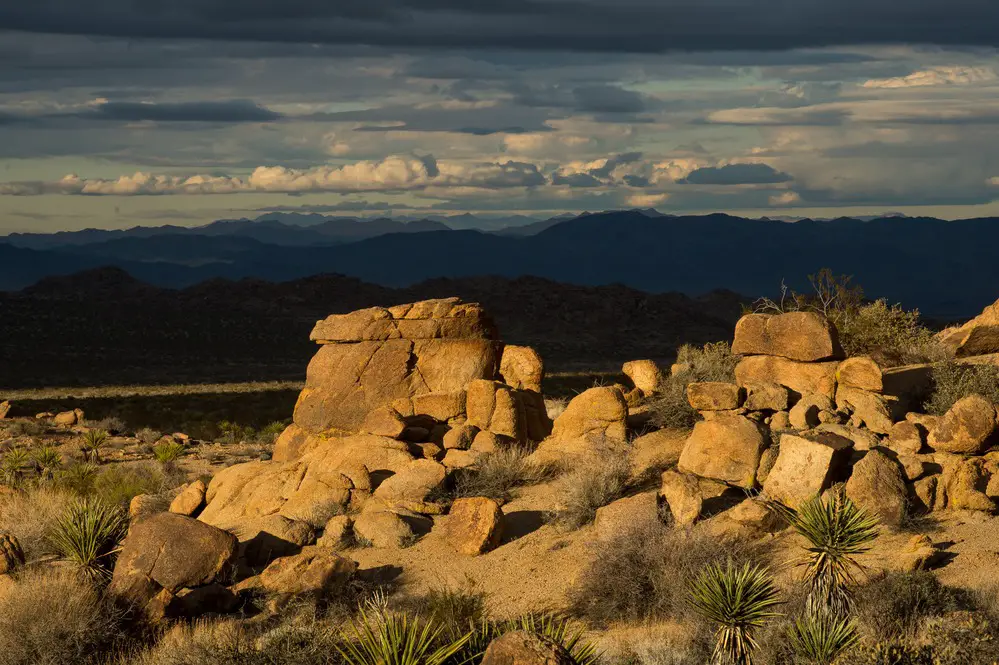
Things To Know
- Difficulty: Easy
- Trail type: Out & back
- Distance: 1.2 miles
- Elevation gain: 88 feet
- Dogs: No
Barker Dam Trail: Description: Joshua Tree Hikes
Dive into history as you explore the Barker Dam Trail. This trail winds through the remains of a historic cattle ranch. The old ranch gives you glimpse into the area’s past.
Along the trail, you’ll find a calm desert retreat created by the dam. Wildlife gathers here to drink, when there’s water, and be refreshed in the dry surroundings. You could see:
- White tail antelope
- Bobcats
- Foxes
- and more…
Things To Know
- Difficulty: Easy
- Trail type: Loop
- Distance: 1.3 miles
- Elevation gain: 59 feet
- Dogs: No
Fortynine Palms Oasis Trail: Description
Escape the desert heat and discover a desert oasis on the Fortynine Palms Oasis Trail. As you hike through a rugged canyon, the trail takes you to a hidden oasis.
When you reach the oasis, you will love the palm trees swaying in the breeze and the cool greenery. The cool shade and calm setting offers the perfect spot to rest as you hike.
Sunny and hot in the summer, take water!
Things To Know
- Difficulty: Moderate
- Trail type: Out & back
- Distance: 3.1 miles
- Elevation gain: 636 feet
- Dogs: On leash
Hidden Valley Trail: Description
Discover the secrets of Hidden Valley as you hike along this pretty trail. Surrounded by huge rock formations, cattle rustlers used the enclosed valley as a hideout. You will enjoy the stunning views and mysterious way that light and shadow play together in the valley.
You see many of the park’s features on a very short hike. Bring water!
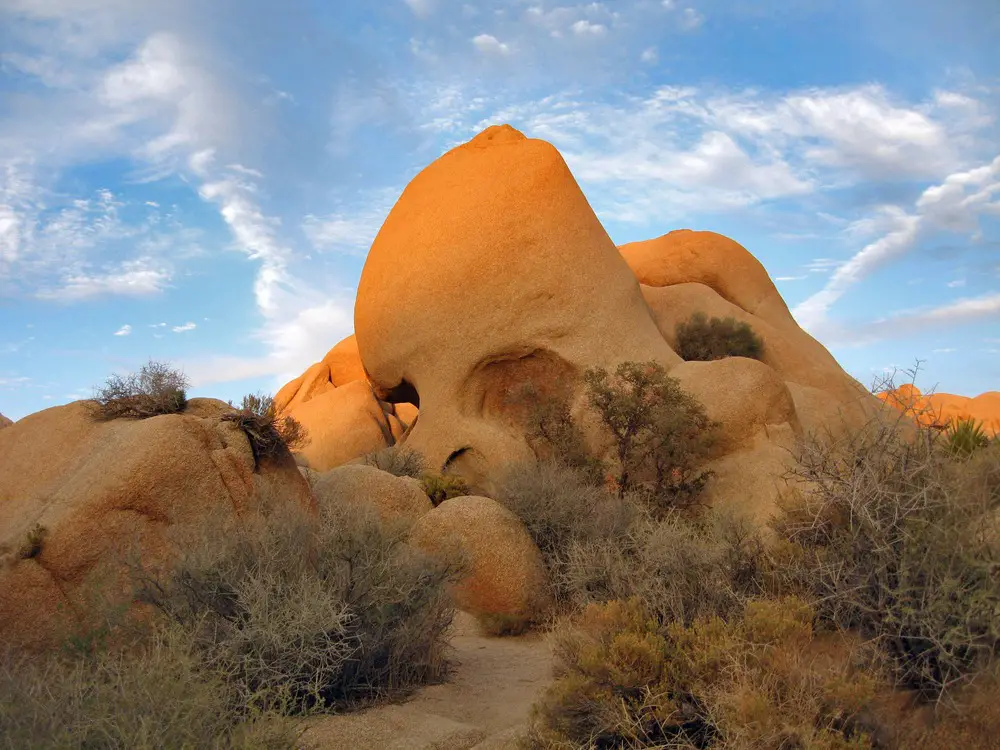
Things To Know
- Difficulty: Easy
- Trail type: Loop
- Distance: 1.0 miles
- Elevation gain: 118 feet
- Dogs: No
Lost Palms Oasis Trail: Description
Take an engaging hike through the Lost Palms Oasis Trail. As you hike the trail, you might be surprised to see towering palm trees in a barren desert landscape.
This hidden desert gem shows you nature’s strength. You’ll be treated to a view of the delicate balance between life and the dry desert land.
Bring a lot of water, it’s a long hike. Also wear a sunhat and sunglasses.
Things To Know
- Difficulty: Moderate to hard (long and hot)
- Trail type: Out & back
- Distance: 7.4 miles
- Elevation gain: 1,046 feet
- Dogs: No
Panorama Loop Trail: Description
You will be awed when you hike this trail. As its name suggests, the trail has breathtaking, sweeping views of the desert landscapes and distant mountain ranges.
Bring your bug spray, Of course, bring water, and wear a sun hat (no shade).
Things To Know
- Difficulty: Moderate to hard (fairly long, no shade, hot, some incline)
- Trail type: Loop
- Distance: 6.3 miles
- Elevation gain: 1,194 feet
- Dogs: No
Ryan Mountain Trail: Description
Challenge yourself with the Ryan Mountain Trail. The trail rewards hikers with magnificent views after you reach the mountain top. At the top, you can see Joshua Tree’s sprawling beauty where rugged mountains meet the desert’s vast distance.
Like the other trails, HOT, so bring water.

Things To Know
- Difficulty: Moderate
- Trail type: Out & back
- Distance: 2.9 miles
- Elevation gain: 1,062 feet
- Dogs: No
Skull Rock Trail: Description
Enjoy this trail’s peculiar beauty where nature’s ability to make sudden changes takes center stage. The trail winds through a landscape decorated with unusual rock formations. One formation looks like a skull!
Crowded, everyone wants a Skull Rock picture.
Things To Know
- Difficulty: Easy
- Trail type: Loop
- Distance: 1.7 miles
- Elevation gain: 160 feet
- Dogs: No
Split Rock Loop Trail: Description
You might feel a mystical pull as you hike the Split Rock Loop Trail and walk through towering rock formations. The trail’s unique geological features make it a hike for hikers who want an otherworldly experience.
Another crowded trail, everyone wants a Split Rock picture.
Things To Know
- Difficulty: Easy
- Trail type: Loop
- Distance: 2.4 miles
- Elevation gain: 275 feet
- Dogs: No
Summary: Joshua Tree Hikes
The best Joshua Tree hikes offer hikers a one of a kind visual hiking experience. Joshua Tree Park and Twentynine Palms also have a rich history.
From the early Native American tribes, to the modern day city, Twentynine Palms evolved into a community full of fun enerygy. Joshua Tree improved the area’s appeal since the park attracts tourists from all over the world.
Whether it’s hiking the desert landscape, enjoying local food and entertainment, or just enjoying the area’s history, Twentynine Palms and Joshua Tree have something to offer everyone.
For more information about the best Joshua Tree hikes, see the AllTrails app. The free app has helpful information. The premium app has lots of useful hiking information including offline maps.
Also, consider an America The Beautiful Pass. The pass includes entry to all U.S. parks, monuments, forests, and more.
If you need hiking gear, Amazon has some very good gear at economical prices.
Pin This Post For Later.

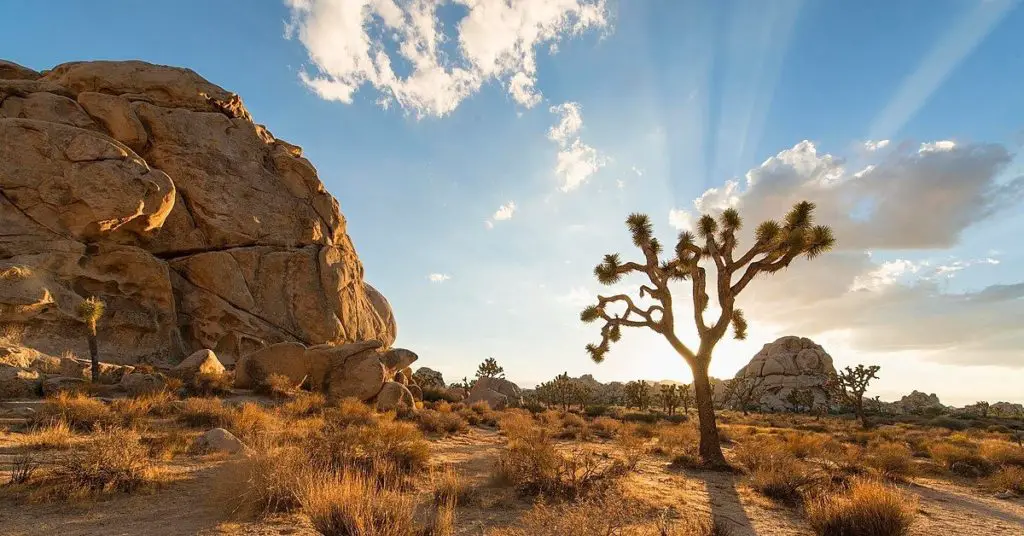
CC BY 2.0,
via Wikimedia Commons)
